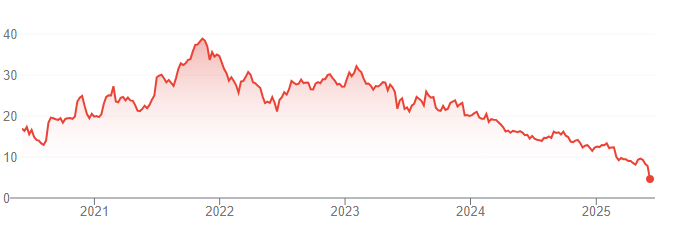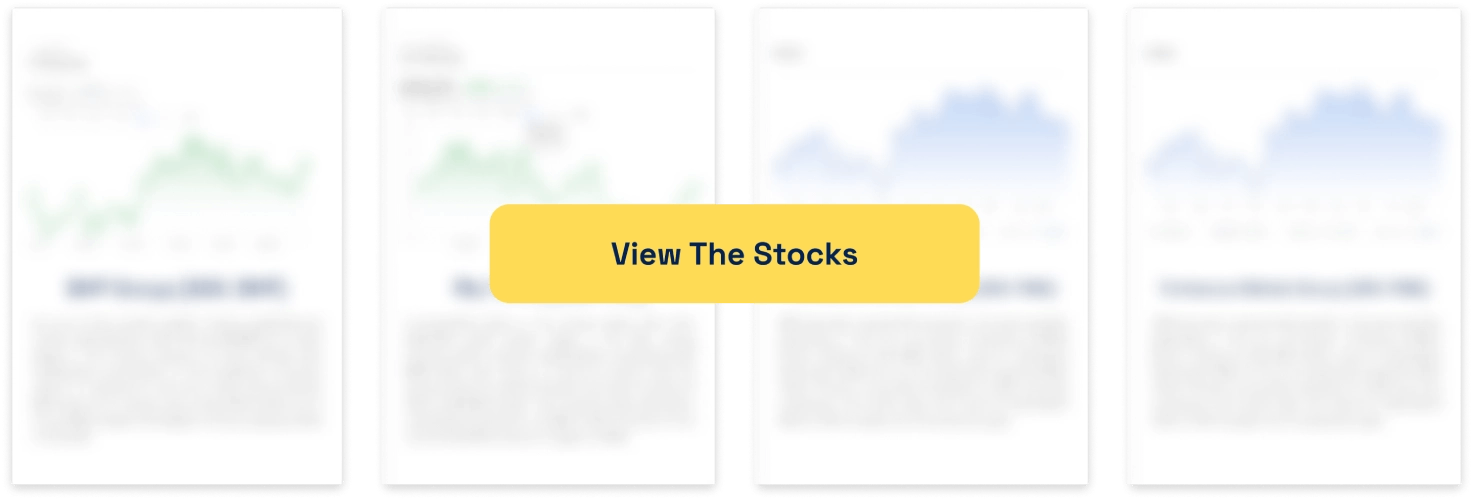IDP Education (ASX:IEL): Down 80% since 2021 as international students shun Western universities (even before Trump’s return)
![]() Nick Sundich, June 5, 2025
Nick Sundich, June 5, 2025
Donald Trump’s attempts to restrict foreign students at Harvard just shows what IDP Education (ASX:IEL) has been grappling with since late 2021.
At that time, students were restricted from travel, and so enrollments dipped, but the hope was that things would get back to normal. And the irony is that IDP (despite dipping during the Corona Crash) was 50% higher in November 2021 than in January 2020. But since then, shares have sunk over 80% as policy after policy has sent investors into panic.

Those who thought it was a ‘buy the dip’ opportunity would be particularly disappointed.
IDP Education has quite a story
IDP Education emerged in the late 1960s as a government scheme to link Australia’s universities research with Asia. Students were already coming here under the Colombo Plan, while others came separately, but the government wanted to make formal ties. In 1986, the Hawke government took things further and introduced an effective recruitment agency to get foreign students to Australia.
By the mid 1990s, IDP (which stood for International Development Program) had a presence in several countries in Asia. The richest could always send their kids to Oxford and Cambridge, but Australia thought there was opportunity in the growing middle class in Asia to go to university abroad. In the mid-2000s, 50% of the company was sold to the co-founders of Seek and it expanded to recruiting students to universities in other nations. In 2015, it was publicly listed and now is the world’s largest student recruitment company.
In FY19 (the financial year before COVID), the company made $598m revenue, $115m EBITDA – figures which were up 23% and 29% respectively. During the pandemic, the revenue plunge actually was not that bad, only falling 10%. Student placement revenue was down by more than that (34% for Australia) but revenue from English language testing held firm. In FY22, student placements more than recovered, and English language testing grew as well, leading to 50% revenue growth to $793.3m. The next 2 years saw further growth to $981.9m in FY23, then $1,037m in FY24.
But its purpose for existance is under attack
Western governments keen to shift the blame for rising inflation and housing shortages have sought to scapegoat international students and have put restrictions on them. Obviously Trump’s restrictions on Harvard have made headlines, but the irony is that there haven’t been specific changes, just that there have been an increase in visa rejections. This has led to a 27% decline in FY25 Q2 visa issuances.
But this is actually better than Canada which has seen a 65% decline due to policies such as restrictions on post graduate work rights and the removal of priority visa processing streams. Australia has seen a modest decline of 10%, in spite of the enormous increases in non-refundable application fees. Yet a proposed cap of students failed to pass during the last term of parliament.
The UK has only seen a 9% decline, but it is seriously considering actions. An Immigration White Paper released in May 2025 recommended tightening visas for select countries, increasing English language requirements and a 6% levy on higher education providers for international students – among other measures.
IDP is feeling the pinch
IDP was starting to see an impact in its FY24 results. English language testing volumes fell 18% ‘reflecting uncertainty in key desgination market policy settings’. Its student placement volumes grew 17% and revenues grew 27%. Nonetheless, it expected a 20-25% decline in student volumes in FY25 relative to FY24. Investors were told the business would be focused on growing its market share, reducing costs and investing in strategic growth areas.
And ultimately the company said it,’ believes the long-dated structural growth drivers that underpin the economic and social importance of the international education industry, and immigration more broadly will underpin the market’s long-term growth trajectory’.
FY25 has been the year the company felt the pinch. Its half-yearly revenue fell 18% and profit fell 39%. And earlier this week, the company released a further trading update. It expects placement volumes to fall 28-30% and language testing volumes to fall 18-20%. The revenue impact was promised to be mitigated by strong average fee growth, although only time would tell.
Investors were warned that uncertainty would continue into FY26 and that the company was now undertaking a ‘detailed review on longer-term cost, productivity, investment and commercial levers’, more of which would be revealed at its annual results in August.
Things will get worse before they get better
That’s what we think. And so it’s best to avoid this company for the time being.
What are the Best ASX Stocks to invest in right now?
Check our buy/sell tips
Blog Categories
Get Our Top 5 ASX Stocks for FY26
Recent Posts
Webjet Sinks 22 Percent After Softer H1 Results and Weak Domestic Demand
Webjet Falls 22 Percent After H1 Revenue Dips and Domestic Flight Demand Softens Webjet (ASX: WJL) opened down 22 percent…
Javelin Minerals Jumps 2,900 Percent on Capital Consolidation
A Sharper Share Register Sets Javelin Minerals Up for Its Next Corporate Stage Javelin Minerals (ASX: JAV) surged an extraordinary…
Why Are Droneshield Shares Dropping and Should You Be Worried
DroneShield Selloff Tests Nerves, But Fundamentals Tell a Different Story DroneShield (ASX: DRO) experienced a sharp selloff this morning that…



